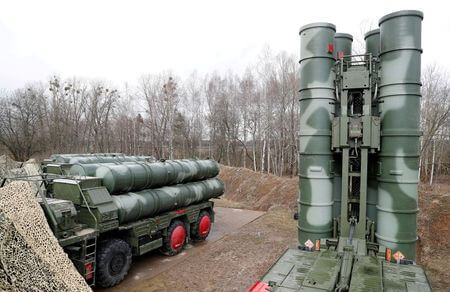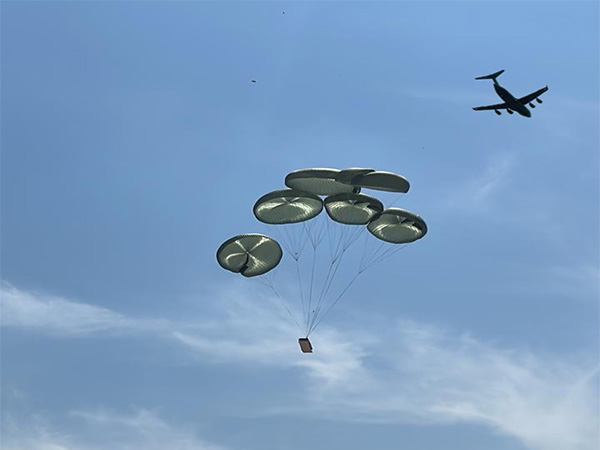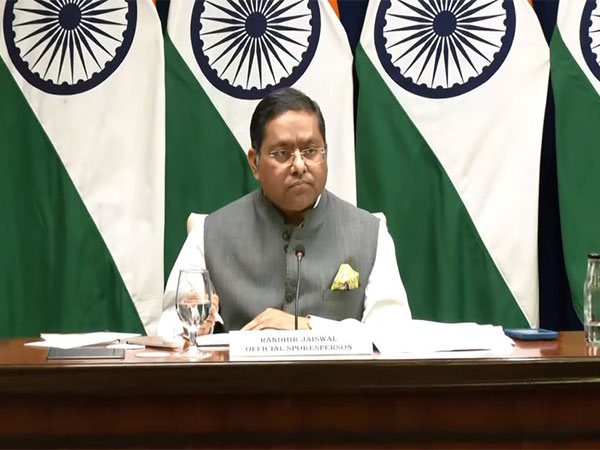
India Needs to Deploy its Ballistic Missile Defence System

The commencement of the induction of S 400 Missile system by the Indian Air Force has once again brought into public consciousness the issue of Ballistic Missile Defence (BMD). S 400 is believed to have in addition to being an anti-aircraft system, a proven capability of a BMD. Networked with the indigenously developed BMD system that has both exo-atmospheric and endo- atmospheric interception capability, the S 400 would make a potent and lethal combo to provide an effective shield not only against enemy fighter aircrafts but, UAVs, cruise and ballistic missiles as well.
The developments in Pakistan such as the mercurial rise of the terrorist groups like Tahrik e Taliban Pakistan (TTP) and other fundamentalists organisations such as Tahrike Labbaik Pakistan (TLP) and the recent capitulation of the Pakistan government to the demands of these groups should be a cause of concern for India’s security planners.
During cold war, the limited contribution that BMD made towards deterrence was well understood. The western strategic thinkers agreed that it was more feasible to maintain a larger nuclear arsenal to execute a second strike, rather than relying on BMD to safeguard nuclear stockpiles, – and thus laid less reliance on BMD in deterrence policies. This was also true because the players of Cold war were not encumbered by the concept of No First Use (NFU) of nuclear weapons.
Despite this, both global powers of the of the cold war now have BMD systems. The United Kingdom and France who are members of NATO are protected under the U.S. missile defences planned for Europe as part of the alliance. In West Asia, Israel has its own BMD systems such as David’s Sling and Arrow Systems. Similarly, South Korea and Japan in the East Asia are protected by U.S. THAAD and Aegis BMD’s sea-based interceptors. Only in South Asia, which has three nuclear weapon states, out of which two are also regional powers – and with not so cordial relations amongst them, does not have any BMD System till recently.
However, the changed ground realities, since the end of the cold war, compel us to develop a changed understanding of the potential role the BMD plays in deterrence calculus. Given the different ground implications of BMD and its potential to reshape regional security, India needs to carefully study and prudently examine all attendant risks to national security that could emerge out of the actions, of China and Pakistan- the two main players in India’s security calculus. A methodical analysis of this kind would facilitate India to understand better as to how the BMD contributes to strengthening the nuclear deterrence and also to formalise and evolve its own BMD policy and the implementation road map.
Ballistic missiles have certain unique features such as their range, speed and high trajectories which give them a unique reach, and these features give them a sort of invincibility against the defences and to interception vis-à-vis the manned aircraft or cruise missiles. It is for these reasons that missiles hold the attraction for many states as well as non state actors. In an asymmetric conflict the threat of potential destruction that can be caused by missiles can be used as a tool for coercion.
The following statements by Glenn Snyder ‘Deterrence works on the enemy’s intentions, while defence reduces its capabilities’, and ‘Deterrence is by definition a peacetime objective, while defence is a wartime value’ aptly surmise the deterrent and coercive power of the missiles. To achieve effective and successful deterrence, a nation must have a mix of right capabilities, adequate capacity and demonstrated credibility. The credibility also has to be communicated to the adversary in the form of intent and political will to utilize that capability. However, prior to communicating the intent, objective identification and recognition of vulnerabilities is a must lest the stabilizing deterrent is perceived as a threat and could lead to undesired escalation.
To overcome this ‘security dilemma’, it is essential to adequately comprehend and analyse the adversary’s value system as these only will define his perception of victory/defeat and thus the deterrent measures need to formalised around these beliefs and value system. To deter an adversary it is necessary to threaten its ambitions, goals and core values defined within the gambit of his beliefs and value systems or by enhancing the risk and costs of pursuing his goals.
The phenomenon of Deterrence involving a conflict with a less predictable nuclear power is distinct from that with a predictable one. Against such an irrational and unpredictable adversary the threat of retaliation may or may not work. India Pakistan is one such dyad in which Pakistani state has displayed considerable irrationality and the various non state actors propped up by the state whose pursuit of nuclear weapons is not hidden from anyone further complicate and destabilize deterrence. Though supported by the establishment, at times these non state actors have gone rogue and out of control of the establishment due to their lofty Islamist ambitions. Such non state actors believe in punishing their enemy without considering the consequences of retaliation or unacceptable damage to their own self. Nuclear retaliation against such non state actors is not possible. In such a dyad deterrence may be less effective and may need to be buttressed by effective BMD to minimize the damage due to first strike. Thus, BMD, although being a defensive capability, also contributes to deterrence.
Some strategists have argued that the introduction of BMD systems in South Asia would destabilize the prevailing nuclear equilibrium between India and Pakistan and lead to an ‘all out’ arms race. However, this is a flawed view that begs to be corrected. BMD being a defensive system, offers a non-escalating option within the framework of deterring capabilities. Employment of BMD vastly negates the probability of adversary’s intended aim being achieved through actual use or threat of use of ballistic missiles. Thus BMD not only potentially prevents loss of lives and large scale destruction but also deters the adversary from using ballistic missiles or threatening their use at all, since the intended effects of his actions becomes uncertain. This gains significant relevance in light of the avowed policy of NFU espoused by India in its Nuclear Doctrine. The role and efficacy of missile defence systems also comes to the fore to ensure a survivable missile force and an effective command and control system to execute a massive second strike. Thus for India to possess BMD systems given the nuclear brinkmanship repeatedly adopted by Pakistani state and the pursuit of nuclear weapons by Pakistani non state actors to harm India is a doctrinal necessity.
The enhanced unreliability of achieving the intended political or military goals by using ballistic missiles also reduces the invitation of retaliatory strikes by the adversary. A functional BMD system, thus facilitates escalation management during crises, offering opportunity for employment of other means of conflict resolution such as bilateral talks or third party mediation, and reduces the burden on the leadership to undertake any hasty pre-emptive actions. This in turn contributes positively to crisis stability.
Since the reliability of ballistic missiles in a BMD environment is suspect, the adversary is compelled to either enhance his stockpile of ballistic missiles significantly, which has cost implications. Therefore, it can be inferred that BMD compels the adversary to enhance its stockpiles thereby hiking up the cost of it’s offensive capability, which itself acts as a deterrent.
Many security analysts believe that the threat of use of nuclear weapons had prevented India from coming up with an appropriate response strategy during the 1999 Kargil conflict and the long military confrontation that followed the terrorist attack on India’s Parliament in December 2001. They also believe that the Cold Start Doctrine that India’s military came up with subsequently also was blunted by Pakistan’s nuclear brinkmanship.
However, once militaries start to deploy in an eyeball to eyeball scenario, BMD has several supporting effects. Firstly, BMD enhances that space in the conflict continuum between conventional and nuclear conflict. Secondly, the protection provided by the BMD to the field forces for their manoeuvres within the battle areas would contribute to war fighting success. This protection and freedom of action enjoyed by own forces, extracts a toll on the adversary’s finite combat resources, and makes operational planning a tedious process. Depending on the willingness of the adversary to take risk, the presence of BMD in the calculus may delay or arrest the escalation. In doing so, BMD therefore, would play a deterrent effect.
If only limited missile capabilities exist with the adversary state, a functional BMD raises the threshold for the aggressor of using them, due to diminished chances of success and this could even force the potential aggressor to deescalate based on risk return analysis. To summarise, more effective the missile defences, the less credible the adversary’s missile threats appear. The flip side of having a functional BMD is that it might make the nation more risk-accepting and this may appear to some as being potentially aggressive. Therefore, India’s BMD could strengthen India’s proactive military strategy dubbed as the Cold Start Doctrine aiming at conducting a limited surgical attack against Pakistan by providing its military both the sword to fight and shield to protect.
Sino Indian nuclear deterrence rarely comes up for debate in strategic circles. Primarily because the Sino Indian nuclear deterrence is considered more stable than the Indo Pak nuclear deterrence due to many reasons. Unlike Pakistan, China has never held out a veiled or overt nuclear threat to India. While there is a certain ambiguity in the Chinese NFU, no military crises between India and China till date has witnessed nuclear brinkmanship.
China and India have both embarked on developing and acquiring ballistic missile defence systems. China has already conducted an anti-satellite missile test using a kinetic kill vehicle and ground based midcourse tests in 2010, 2013 and 2014. All these confirm that China has made considerable progress in development of BMD. Further, China has deployed a X band radar with a detection range of 4000 Km range facing India on Qinghai plateau north-east of the Tibet Autonomous Region, thereby confirming that China has already deployed a functional BMD system against India. Irrespective of India, China will undertake improvement of its ballistic missile defence system. In addition to its indigenous HQ 19 system China has already acquired the Russian S 300 and S 400 anti-missile systems, weaponizing and deploying these technologies for its nuclear as well as conventional arsenal in India’s periphery.
Deploying the S 400 along with the indigenous BMD system in a single network would provide optimal BMD capability to India. While India being a vast country of continental proportion, the entire territory would require many regiments of such systems, the finite resources and competing priorities preclude this. India can at best achieve this in a phased manner based on inters se importance of what is to be protected. The seat of the government, the Nuclear Command Authority and its Command Control and Communications with select nuclear bases, major economic and strategic industrial centres should merit the attention of the national security planners in first phase of deployment planning.
The etched in stone categories of deterrence and BMD of the cold war vintage are no more applicable to our regional security system. Deterrence and missile defence are no longer polar opposites. Since neither deterrence nor missile defence alone offers strategic security in the twenty first century, a new strategic indeterminacy has emerged between the two. A less decisive and a more enigmatic relationship between deterrence and missile defence today define strategic security. The new deterrence paradigm has to have both the offensive and defensive dimensions.
****************
Disclaimer
The opinions expressed in this article are the author’s own and do not reflect the views of Chanakya Forum. All information provided in this article including timeliness, completeness, accuracy, suitability or validity of information referenced therein, is the sole responsibility of the author. www.chanakyaforum.com does not assume any responsibility for the same.
Chanakya Forum is now on . Click here to join our channel (@ChanakyaForum) and stay updated with the latest headlines and articles.
Important
We work round the clock to bring you the finest articles and updates from around the world. There is a team that works tirelessly to ensure that you have a seamless reading experience. But all this costs money. Please support us so that we keep doing what we do best. Happy Reading
Support Us





















POST COMMENTS (10)
Anubhav
Rajeve
Brig AK Maini
Dr Sukhvir Singh
DCSM
Sanjeev Kumar
Brig Girish
Rajasekar
Satya
Col AK Pandey